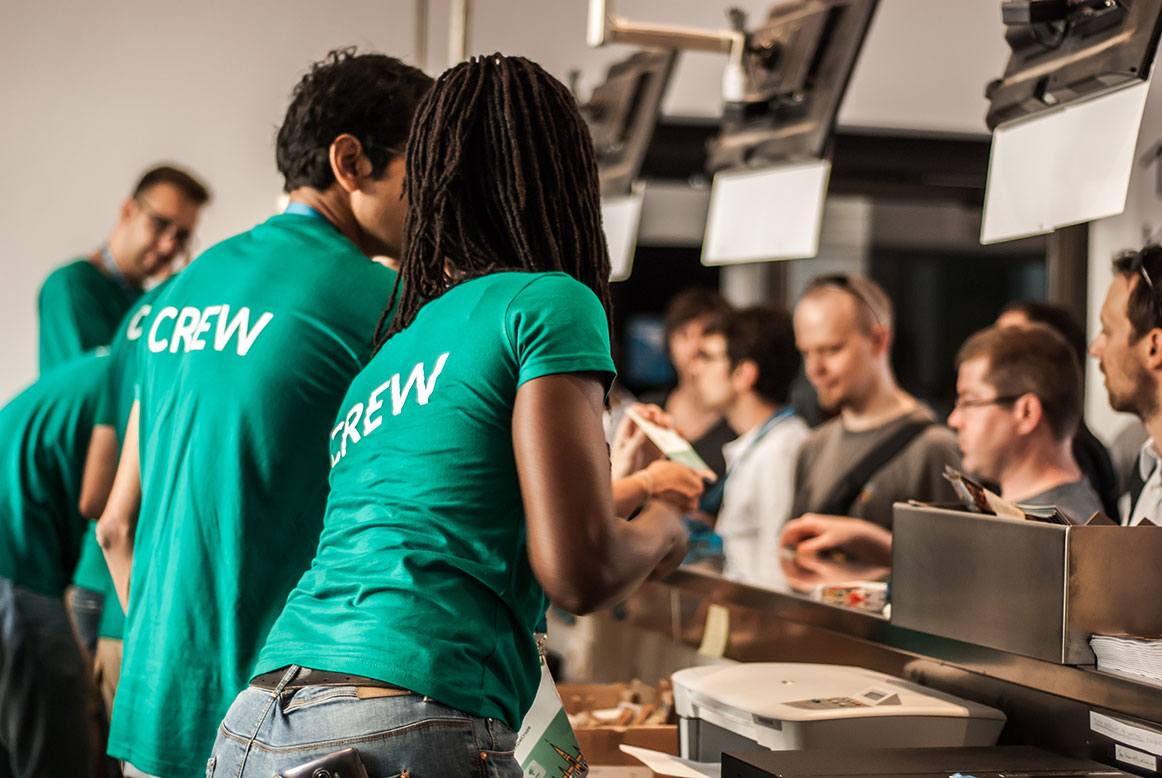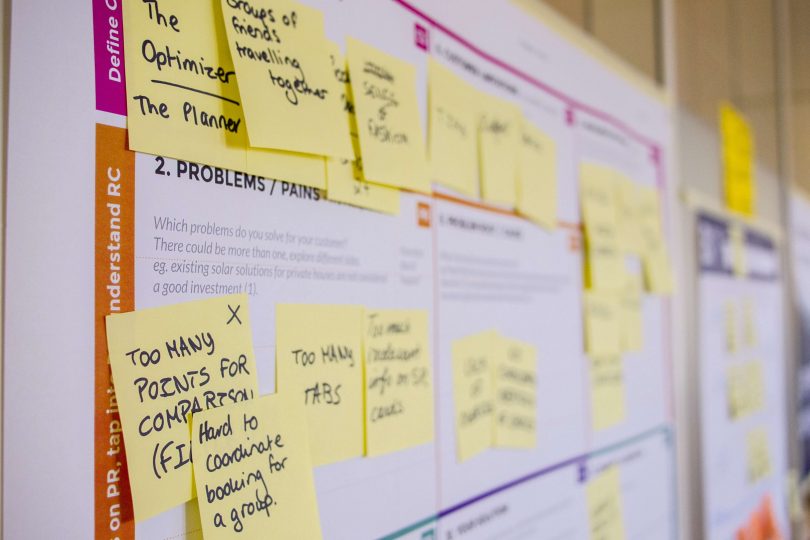Contents
User experience (UX), customer experience (CX), and service design (SD) are all important human-centred design disciplines that are underpinned by theory and rigorous research.

These disciplines can be traced back many years. However it is only more recently that they have gained popularity, particularly as more companies become design-driven and are accepting design as a crucial business strategy (such as Airbnb, Adobe, and Google).
These shouldn’t be thought of as areas for only large organisations to be concerned with, in fact, for the small business owner, having an understanding of these principles and how they can affect both your product and your target audience can be the differentiator that sets you apart from the competition.
Even with the recent increase in adoption of UX, CX and SD principles, there still tends to be some confusion around what UX, CX, and SD are, and the purpose of each. The aim of this post is to describe each of these disciplines, the benefits of them, as well as how they are interrelated.
Understanding user experience (UX)
User experience (also known as UX) is the process of designing a product that is useful, functional, easy to use, as well as enjoyable to interact with. The UX process can be applied to both digital and physical products, such as websites, mobile apps, cars, pamphlets, fitness equipment… the list goes on.
UX isn’t just about how a product works, it also covers the context within which the user is interacting with the product and how it makes them feel. UX brings incredible value to products and should be included throughout the entire design process.
The UX process includes three main phases:
- Discovery
- Design
- Testing / feedback.
Phase 1: Discovery
The purpose of the discovery phase is to understand the people who currently use or will use the product, what they want to do with the product, as well as how they want to feel when they use the product. Further, the discovery phase takes into account a number of other factors – such as the business requirements for the product, market demands, the budget, and the available resources. The discovery phase allows these factors to be understood to ensure the product is designed for the best experience possible.
“If I had five minutes to chop down a tree, I’d spend the first three sharpening my axe.”
Anonymous
As with many things in life, the discovery phase is the most important. Even if you don’t get to the design and testing phases, the discovery phase gives you a much deeper understanding of your customers and what you want to achieve as a business. Taking shortcuts here will result in poor outcomes during later stages.
Phase 2: Design
During the design phase, the navigation, usability, and user interface of the product is designed according to the user and business requirements, as well as best-practice UX design principles.

The designer should constantly be asking themselves, “how does this feature affect the user journey? Is it intuitive and easy to understand?”
Phase 3: Testing/Feedback
Once the initial design has been created, the testing / feedback phase commences. This phase involves the product being tested with real users in order to identify the elements of the design that work well, as well as those which require improvement.
The UX process is not only for when a product is initially being designed – it also brings immense benefits in optimising a product once it has been launched, as well as to ensure the product keeps up with emerging technology.
Over time, your customer’s needs and preferences will change, so it is important that your product keeps pace with these changes, otherwise you risk losing your customer base and therefore your market share.
Don’t be tempted to release a new product or an update based on your ‘gut feel’. Humans are inherently biased. Even if you can only get the feedback of just one person, it will improve the likelihood of success.
A real-world small business example of UX
A family-run restaurant decided to trial a function for customers to book a table through their website. To understand the best way to enable customers to do this, the business spoke with customers about their needs and requirements for such a system. Taking the feedback into account, as well as the restaurant’s requirements for such a facility, an online booking system was created.
The business then tested this system with a few customers to understand if it was user-friendly, and met the user’s needs. Through implementing this online booking facility, the restaurant found their bookings increased, and also the number of no-shows decreased as people were able to cancel or amend their booking online.
Understanding customer experience (CX)
Customer experience (CX) design is the process of designing a product or service that provides a customer with a pleasant, professional, and helpful experience with a company, across their total interaction. This omni-channel interaction may include the digital, retail, customer service, and call centre experience.
For example, you may research a new Apple device on their website, before then visiting a store to actually try out the product and ask a customer assistant some further questions. You make a purchase in-store, then upon arriving home have a support query which you initially try to resolve using website FAQs before resorting to calling their contact centre for help.
At a basic level, CX has three components:
- the environment that is presented to the customer (e.g. a restaurant)
- the encounter (that is, the interaction the customer has with the environment)
- the effect (the impression a customer forms and holds as a result of their encounter with the environment).
For a customer experience to be successful, the total interaction needs to meet or exceed the expectations of all parties involved.
Although as a company you are mostly able to control the environment and the encounter, you have little control over the effect. This is because the effect is predominantly influenced by the customer’s personal circumstances and attributes, including their mood, the context of their interaction with the company, and previous experiences they may have had with similar companies. A good customer experience is one that meets the customer’s needs, does not require too much effort on behalf of the customer, and makes the customer feel good.
A real-world small business example of CX
Next Level Escape is an escape room based in Sydney, where teams of players solve a series of puzzles and riddles using clues and strategies in order to ‘escape’ out of a room.
Next Level Escape has made the customer experience paramount, with examples of including their website which provides potential customers with enough information to excite them, without giving away too much information about the rooms.
Customers are able to book a time to complete the escape room online, and can also ring Next Level Escape if they have any further questions. During the escape room session, a facilitator observes the session and offers any hints as necessary, and once a group has completed the escape room, Next Level Escape takes a photo of the group which they then email to them.
This positive customer experience has resulted in Next Level Escape receiving multiple positive reviews, and a 5-star rating on Trip Advisor.
Understanding service design (SD)
Service design (SD) is the process and act of designing and enhancing services. It is multidisciplinary, and considers all touch points across the entire customer journey, as well as the back-house activities that enable this journey to occur.
Overall, service design involves the intentional and thoughtful design, organisation, and planning of the people, infrastructure, communication, and material components of a service. The aim of service design is to improve the experience between the service provider, its employees, and its customers.

Service design cares about both the customers as well as the employees who are involved in the delivery of a service, and understands that employees are an organisation’s most valuable asset. By taking both customers and employees into account, service design can improve factors such as ease of use, satisfaction, loyalty, and efficiency for all parties.
The service industry represents approximately 70 per cent of Australia’s gross domestic product and employs 80 per cent of working Australians. Adding to that, services can be very complicated – they often involve complex interactions across multiple touch points, with these interactions occurring over days, weeks, or even months.
There are front and back-office considerations, and the delivery of a service often cuts across organisational silos and involves many different people. Given all these factors, employing service design principles can ensure a service is both sustainable and competitive.
For smaller businesses, thinking about service design early on while you have less people and fewer variables to consider can prove incredibly useful as the company grows in size.
For example, if you sell products, ensure that:
- Your warehouse is organised in a manner that makes picking orders more efficient;
- That stock control is connected to your website’s interface so that customers can see if a product is available,
- The customer receives updates as the product moves from being picked and packed, right up to arriving at their door
- Make sure that your support staff have access to the relevant information to resolve customer queries quickly, making then feel empowered and engaged,
- Maintain customer satisfaction that is improved through prompt resolution and helpful agents
A real-world small business example of Service Design
A husband and wife business team have run a beauty salon for the last two-years. Throughout their time running this business, they have considered the service design of their business to ensure both their clients and staff are satisfied.
Areas of service design which they reviewed and improved included implementing an appointment reminder system where the client is text messaged the date and time of their appointment 48 hours before the scheduled time.
The system has seen a decrease in the rate of no-show clients, and also ensures staff members are able to confirm their appointment list for the day. Notes about the client’s beauty treatments (e.g. their skin type, preferred treatment) are also kept on file.
This is to ensure that if a different beauty therapist than the client’s regular therapist conducts the appointment are sufficiently informed of the necessary information about the client ,ensuring the appointment goes smoothly.
Such service design considerations have been fundamental to creating a profitable business, as well as both happy customers and engaged staff.
Conclusion
In conclusion, although UX, CX, and SD are each distinct disciplines, they shouldn’t be considered in isolation. UX, CX, and SD all focus on the experience of people, and their main purpose is to create a quality and successful product or service. However, they do have fundamental differences, and it is important these differences are understood to ensure each of these human-centred design disciplines are applied to their maximum effectiveness.
“The opinions expressed by BizWitty Contributors are their own, not those of BizCover and should not be relied upon in place of appropriate professional advice. Please read our full disclaimer."







